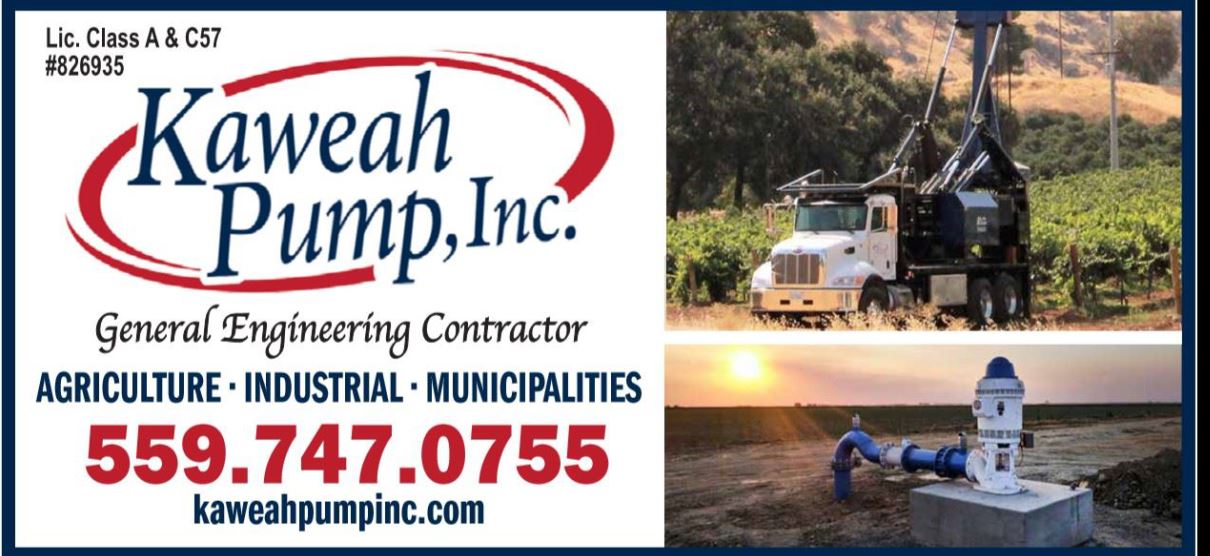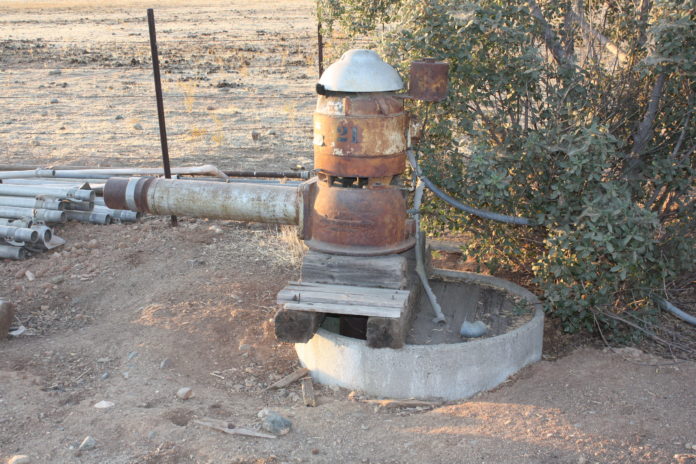 The Pixley Groundwater Commission and the Lower Tule Groundwater Commission met at the Lower Tule River Irrigation District conference room in Tipton on Tuesday, November 26, 2019. We got a little bit of a late start. General Manager Eric Limas kicked things off at 10:20am instead of the scheduled 10:00am time. Which worked out well for me since the traffic on 99 was slow moving. Limas said the Groundwater Sustainability Plans for both districts have been wrapped up and that’s why they will meet jointly this morning. Good for them.
The Pixley Groundwater Commission and the Lower Tule Groundwater Commission met at the Lower Tule River Irrigation District conference room in Tipton on Tuesday, November 26, 2019. We got a little bit of a late start. General Manager Eric Limas kicked things off at 10:20am instead of the scheduled 10:00am time. Which worked out well for me since the traffic on 99 was slow moving. Limas said the Groundwater Sustainability Plans for both districts have been wrapped up and that’s why they will meet jointly this morning. Good for them.
Limas talked about the recent landowner meetings and most of the attendees were already plugged in. He asked how to reach the rest of the landowners. Some of the bigger landowners haven’t even shown up. After a review of the MIA list it was determined some of them didn’t sign in at the meetings. For example Director Vince Sola was on the list and at the table of today’s meeting. I saw Sandridge Partners on the no show list but it’s a very safe bet they are well aware of SGMA. Now the Utah State Retirement fund may not be up to speed. Consultant Dan Vink said the question is how much they know past the SGMA 101 level.
There were questions about the Kaweah Sub Basin and how they are approaching SGMA. California Milk Council’s Geoff Vanden Heuvel gave a brief background saying there are three GSAs in the Kaweah Sub Basin: the East Kaweah, the Mid Kaweah and the Greater Kaweah GSAs. The Mid Kaweah is Tulare Irrigation District and the Cities of Visalia and Tulare. Their view is the MKGSA is basically sustainable. The East Kaweah GSA has Friant water and banded together to protect those interests. Everything else is Greater Kaweah.
It was good to hear the interests of on farm recharge has begun to blossom but monitoring usage is on the forefront of folks minds as well. Limas said there are no viable weather stations within the GSAs. Earlier today Land IQ spoke with the GSA managers about installing the stations, maintaining and gathering the data. He said Semitropic WSD has 140 stations and Tule would need about 40 stations. Evidently just any old station won’t work. There has to be accurate and consistent data. Land IQ is running 30 cents per acre more than the Cal Poly SLO satellite ET plan.
It sounded like Land IQ is a more sophisticated platform. Since Land IQ is working in Semitropic and the East Kaweah GSA there is the possibility of economies of scale. It is also more of a one stop shop. They do everything Cal Poly does but with less interaction with the GSAs which reduces the amount of time GSA personnel have to deal with it. Limas asked the directors to consider whether Land IQ or Cal Poly. Vink said having a contract with a private company like Land IQ serves a purpose but bringing in Cal Poly brings peer review and it’s an important enough function to consider trying them both for a year.
Next, since the regularly scheduled December meeting would be Christmas Eve Limas said the work stream would justify skipping a December altogether and meet earlier in January 7, 2020. This date would also fit the LTRID and Pixley ID board meetings. That date didn’t jive with the schedule of most directors. January 13th looked good but after everyone realized they aren’t going to do anything different than they have the past year. Somehow January 6th at 2:00pm was chosen and the 7th at 10:00am. One of the meetings was for LTR and one for Pixley but I didn’t catch which was which. You might want to check back on their website next month.
Under public comment Vanden Heuvel asked what is happening with the Friant Kern Canal subsidence. Limas said Friant is looking to the Tule Sub Basin to pitch in repair and avoidance of future problems. He said hydrogeologist Tom Harder has studied the problem and there may be a way to spread that cost around in an equitable manner. An estimated cost of $400 million for the repair of 35 miles of canal totals a little more than $11 million per mile. Interaction with the White Areas within the impacted portions of the FKC isn’t expected to derail any GSP.
There was some speculation on how paying for the repairs will be split up according to causation. As Vink pointed out dropping a rock on the perps (so to say) will cause ripples that will eventually impact everyone around them. Also, Limas said the coordination agreements are moving forward. Vink said Congressman TJ Cox is going to introduce a bill next year for a couple of hundred million to fix the FKC. On the California side SB 559 will have to be included into the budget. Vink said as a stand alone bill don’t expect a giant cardboard check presented before the cameras.
There was no closed session so that was that.
DISCLAIMER OF RESPONSIBILITY; Waterwrights.net strives to provide his clients with the most complete, up-to-date, and accurate information available. Nevertheless, Waterwrights.net does not serve as a guarantor of the accuracy or completeness of the information provided, and specifically disclaims any and all responsibility for information that is not accurate, up-to-date, or complete. Waterwrights.net clients therefore rely on the accuracy, completeness and timeliness of information from Waterwrights.net DAW entirely at their own risk. The opinions expressed in this report are those of the author and do not represent any advertisers or third parties.
ALL RIGHTS RESERVED. Copyright 2019 by Don A. Wright

SGMA The Sustainable Groundwater Management Act of 2014 calls for the formation of Groundwater Sustainability Areas within Basins and Sub-basins to develop Groundwater Sustainability Plans.
































